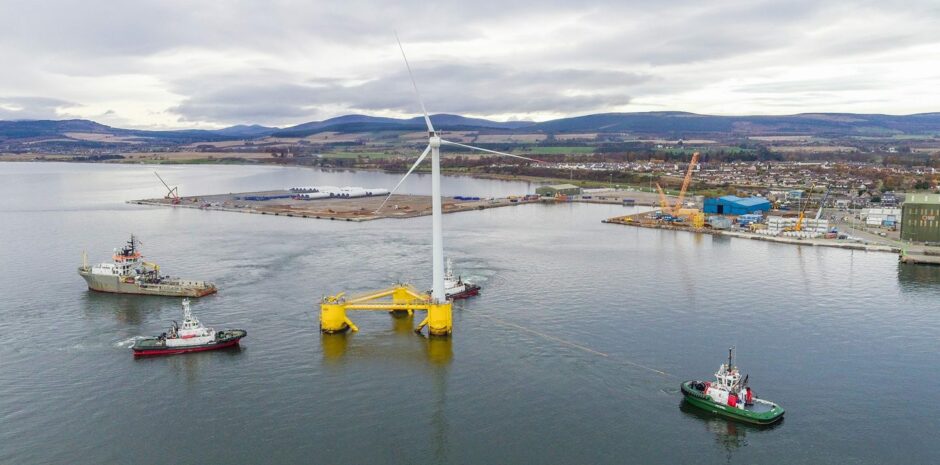
The race is warming up to determine the locations for Scotland’s two Green Freeports.
Freeports are a UK Government idea as part of the levelling-up agenda. They’re supposed to bring great benefits to post-industrial areas by offering all sorts of tax, investment and trade incentives.
The charge against them is that levelling up for some areas might involve levelling down for others. Whether they create new jobs and enterprises rather than displacing them from an unanointed area remains disputed.
As things stand, that argument is on hold. Freeports are happening and Scotland either has to be inside the tent or out. It eventually dawned on the Scottish Government that being outside would mean creating a severe disadvantage with the rest of the UK where freeports are racing ahead. Indeed, some of that is already happening.
So, in the nick of time, a bit of differentiating was achieved and we have eventually ended up, by mutual agreement between Whitehall and Edinburgh, with Green Freeports and a greater emphasis in Scotland on the contribution they can make to net zero targets.
For practical purposes, this translates into the question of how much benefit Scotland can get out of the massive windfarm projects planned for decades ahead, around the whole of the UK coast. On the basis of existing infrastructure, the answer will be much as it has been until now – i.e. “not much”.
The prize at stake, then, is enormous – but depends on creating ports and other onshore infrastructure that can support the offshore windfarms and, by association, the much-vaunted “green transition” into large-scale employment in renewable energy.
We have become accustomed to hyperbole about what renewables investment is going to deliver in terms of jobs, but it is urgent to recognise that this really could be on a different scale. Scottish Renewables, the trade body, describes it as “the biggest industrial opportunity Scotland has ever had” and you can’t get much bigger than that. But it won’t happen automatically.
So where do Green Freeports fit in? For the north of Scotland, the competition probably rests between Aberdeen and the Cromarty Firth. The problem with this sort of bidding war is that to be in favour of one implies being against the other whereas the optimum solution lies in spreading the benefits as widely as possible.
If it really is “the biggest industrial opportunity Scotland has ever had”, or anything approaching it, there surely needs to be some imaginative thinking beyond the hope that it will create replacement jobs for those being displaced form the oil and gas industry – the basic case for Aberdeen and a very significant imperative.
My own instinct, however, is that Aberdeen is better placed to look after itself as a major point of transition because of its history in the offshore industry and ability to attract both public and private investment within the energy sector. Indeed, it is already making an impressive job of positioning itself for renewables work without the Green Freeport imprimatur.
For the Cromarty Firth on the other hand, the enhanced status would be transformational with spin-off benefits for the Highlands and Islands as a whole, as well as the north-east. It has a history of major development from the oil platform boom of the 1970s and has been heavily involved in existing offshore wind projects like Beatrice but is now looking for a more wide-ranging, sustainable and dynamic role.
If the Scottish and UK Governments are looking for a “transformational” effect, they should look very closely at the case being put forward for the Cromarty Firth. It has the land space and natural amenities like water depth and sheltered anchorages not only to accommodate the demands of offshore wind manufacturing but also to expand into the associated energy sectors that the wind boom is going to spawn.
As the bid’s sponsors put it: “Only the Cromarty Firth can create a globally competitive hub and secure the UK’s market leading position in both floating wind and green hydrogen; delivering the jobs, skills and exportable industry which will revolutionise the economy of the Highlands and ensure the UK capitalises on the opportunities presented”.
In calculation, that is a claim that needs to be taken seriously and tested against others. If the Cromarty Firth is indeed the best area to deliver such potential over the decades ahead, while at the same time establishing a substantial industrial base in the heart of the Highlands, then it should prevail even if the political attractions of backing a “North Sea jobs transition” in Aberdeen seem persuasive in the short term.
There is also a natural justice argument. The Highlands and Islands is the natural capital of Scotland’s renewable energy generation, just as the north-east was the natural capital of the oil and gas industry. Until now, renewables have delivered precious little in economic terms to the region. Is that to continue?
I keep coming back to the word “transformational”. The designation of the Cromarty Firth area would be truly transformational for the entire Highlands economy. That is an historic option that Governments should seize or, at very least, give a fair hearing to before opting for easier options.
Brian Wilson is a former UK energy minister.
Recommended for you
